"Purr-fect Pet Parenting: Tips, Advice"
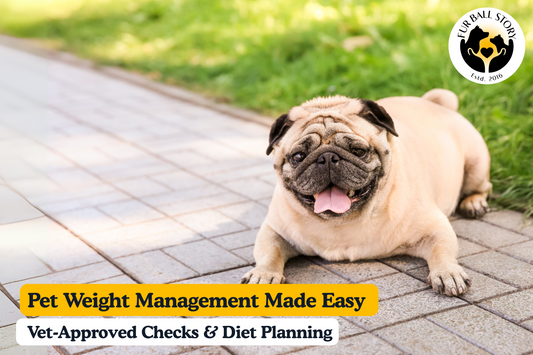
Pet Weight Management Made Easy: Vet-Approved ...
Key Pre-Diet Checks Before Starting a Pet Weight-Loss Program As pet parents, the health and safety of our pets are paramount. Pet obesity is a growing concern for pet owners,...
Pet Weight Management Made Easy: Vet-Approved ...
Key Pre-Diet Checks Before Starting a Pet Weight-Loss Program As pet parents, the health and safety of our pets are paramount. Pet obesity is a growing concern for pet owners, as it can significantly affect a pet's health and quality of life. Obesity occurs when there is an abnormal or excessive accumulation of fat in the body, leading to various health complications. Logically, you would make alterations to your pet’s diet and exercise routines to tackle an issue like obesity. However, abrupt lifestyle changes can often do more harm than good, and it is important to conduct certain checks before making drastic changes to your pet’s diet. Here are a few pre-diet checks to run before starting a weight loss program for your pet. Assess your Pet’s Body Condition Score The body condition score (BCS) is a system used to assess the thinness or fatness of an animal. The BCS system rates pets on a scale from 1 to 9, with 1 indicating severe undernourishment and frailness, and 9 marking excessive obesity and unhealthy levels of fat. An ideal BCS score is typically a 4 or 5, indicating a healthy proportion of body fat and muscle. In an ideal body, the pet’s ribs, spine, and hip bones are easily felt, with a waist and abdominal tuck visible when viewed from the top and the sides. How to Perform a Pet Body Condition Check at Home Rib Check You should be able to feel your dog or cat’s ribs when gently running your fingers along their sides. A pet at a healthy weight will have a thin layer of fat covering the ribs and spine; noticeable by touch but not visible. If you detect a thick fat layer, it is a sign your pet might be carrying extra weight. Waist Check When viewing your pet from above, their waist should be clearly defined just behind the ribs, narrowing slightly toward the hips with a subtle inward curve at the middle. The absence of a visible waist or a rounded, bulging shape may suggest your pet is overweight. Tummy Test From a side view standing beside your pet, the belly should show a gentle upward slope or tuck. If the abdomen hangs down or bulges outward, this could indicate excess belly fat, which is particularly concerning because it is linked to inflammation and health risks. Baseline Diagnostics to Rule Out Disease Underlying health conditions or disorders can affect your pet without being very visible. Before starting a weight loss program for your pet, make sure to perform a full physical exam. This includes basic blood work (Complete Blood Count and blood chemistry), urinalysis, and T4 testing (for dogs) or T4/TSH testing (for cats). If you’re suspicious of such a condition in your pet, get them tested before making changes to their diet. By doing so, you can rule out pre-existing endocrine disorders like hypothyroidism, Cushing’s, diabetes (cats), and hyperthyroidism (cats) that can mimic or cause weight issues. How to Calculate Your Pet’s Weight-Loss Calories (RER & 80% Restriction) (An easy, step-by-step guide for dog and cat parents, as per AAHA & WSAVA veterinary nutrition guidance) 1. Calculate Resting Energy Requirement (RER) RER is the energy (kcal/day) needed for basic bodily functions—calculated using your pet’s ideal weight, not their current bodyweight. Formula: RER = 70 × (Ideal body weight in kg)^0.75 This formula applies to all sizes of dogs and cats 2. Apply the Weight-Loss Multiplier For weight loss, AAHA and WSAVA recommend feeding ~80% of RER for dogs, or ~100% of feline RER (i.e. factor of 0.8 for dogs, 1.0 for cats). Why 80%? This creates a safe calorie deficit that supports a steady 1–2% weight loss per week, without overeating lean tissue. Note this is based on ideal body weight, not current weight, per national guidelines How to Do the Math at Home ① Determine ideal weight in kg. ② On a scientific calculator app: enter the ideal weight → press y^x or xʸ → type 0.75 → multiply the result × 70. That's your RER. ③ Take RER × 0.8 (dogs) or × 1.0 (cats) → this is your daily weight-loss kcal target. ④ Weigh your pet every week using the same scale and time of day (ideally before breakfast). If weight loss is slower than 1% per week after 3–4 weeks, reduce intake by 10% and recheck. Example (Dog, Ideal Weight = 20 kg) RER = 70 × (20)^0.75 ≈ 660 kcal/day 80% of RER = 0.8 × 660 = ≈ 530 kcal/day This level generally leads to ~1–2% weight loss per week Key Guidelines to Remember Always calculate using ideal weight, not current. You’re aiming for ideal caloric needs. Monitor weight regularly. Adjust calories if weight loss is <1% or >2% weekly. Treats & extras matter. Count them within the total kcal; even a few "healthy" snacks can ruin the plan if forgotten. Homemade Weight-Loss Diet for Dogs (Detailed, Practical & Safe) 1. Basic Macronutrient Structure Protein: Aim for ≈50% lean protein (by weight), derived from low-fat chicken, turkey, white fish (e.g., cod), or egg whites. Fiber: Include ≈25–30% fiber-rich low-cal starchy veg like pumpkin, sweet potato mash, green beans, carrot, zucchini. Carbs / Grains: A max of 15–20% from cooked grains like brown rice, quinoa, or oats—optional, especially for dogs with gluten/allergy concerns. Fats (sparingly): 1–2 tsp fish oil (for omega-3); or ½ tsp flaxseed oil or lightly used coconut oil. (Total fat ≈ 5% of total weight.) This mix keeps calories low but quality high, suppresses hunger, and helps preserve lean muscle on a weight-loss plan. 2. Safe & Helpful Ingredients Ingredients Use When Weight-Loss? Why Cooking Tip Skinless chicken/turkey breast, cod ✅ Core protein Very lean, high-quality amino acids Steam/boil and dice fine Egg whites ✅ Lower-calorie protein Digestible, nutrient-dense Scramble or boil; avoid raw egg yolks Pumpkin puree (plain) ✅ Fibre for satiety + gut health Very low kcal; high fibre / prebiotic Steam or use plain canned Green beans, carrots, zucchini, spinach ✅ High-fibre veg Slow digestion and a bulky feel Pureed or steamed finely Sweet potato, brown rice, oats, quinoa ✔️ Up to 20% max Slow-releasing energy; adds bulk Cook thoroughly; avoid white rice Fish oil (1 tsp) or ground flaxseed (½ tsp) ✅ Essential omega-3 fatty acids Helps coat health, inflammation Mix into food after cooking Low-fat cottage cheese or yogurt ✅ Occasional treat ≤ 10% Kcal Adds probiotics, calcium, and protein Use plain, unflavoured variety Unseasoned leafy greens (spinach, kale) ⚠️ Small amounts only Oxalates (spinach) or goitrogens (kale) may interfere with minerals if overfed Rotate weekly; cook & chop finely Ingredients You Should Never Include Onions, garlic, chives, and leeks (any Allium) are toxic even in small amounts. High-fat meats like bacon, sausage, and pork belly. Sugary fruits such as grapes, raisins, cherries (kidney failure risk). Macadamia nuts, chocolate, caffeine, xylitol (in some peanut butter). Raw fish, bone meal, or large amounts of liver (risk of vitamin A toxicity or digestive upset). Uncooked eggs regularly (avidin can block biotin). Salt, spices, added salt/sugar, broth with onion/garlic → use only low-sodium, plain broth if needed. Example Daily Meal Template (for a 20 kg Dog, ~600-650 kcal) Meal Ingredients Weight Approx. kcal Lunch Cooked chicken breast 90 g ~180 Pumpkin puree (plain) 60 g ~20 Steamed green beans + carrot mix 80 g ~30 Brown rice, cooked 40 g ~50 Dinner White fish (cod) 75 g ~85 Diced zucchini & spinach 60 g ~20 Quinoa or oats, cooked 35 g ~45 Fish oil or flax oil 1 tsp ~40 Treats (≤10%) Low-fat yogurt or veggie stick 30 g ~60 How to Fine-Tune & Feed Weigh daily portions using a kitchen scale (not cereal cups) to avoid ~10–20% error. Prepare fresh meals, refrigerate up to 3 days or freeze in 2-day batches. Feed divided meals (e.g., lunch + dinner) to prevent hunger spikes. Track weight weekly: target ~1% of starting weight per week loss; adjust portion ±10% if loss is too slow or too fast. Rotate protein sources weekly (chicken → fish → turkey eggs) to prevent nutrient imbalance and palatability fatigue. Always monitor stool consistency; add beet pulp or increase fibre gently if loose stool occurs.Planning a weight loss program starts well before the first diet change or exercise session. By performing essential pre-diet checks like assessing their body condition, ruling out health issues, and understanding their unique needs, you ensure that the new regimen is as safe as it is effective. Remember, dietary changes and weight management are a marathon race, not a 100-meter sprint.
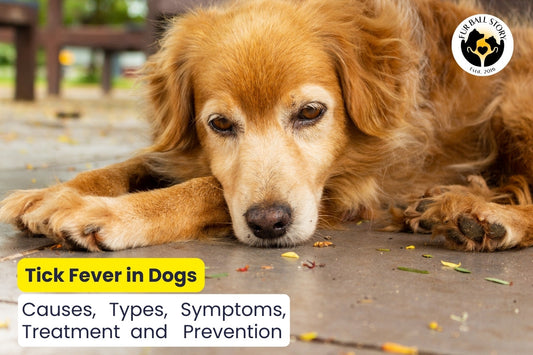
Tick Fever in Dogs: Causes, Types, Symptoms, Tr...
As the days get warmer, thousands of ticks become active. This brings the need to prevent ticks from attacking your pet, as ticks pose life-threatening complications like Tick Fever. By...
Tick Fever in Dogs: Causes, Types, Symptoms, Tr...
As the days get warmer, thousands of ticks become active. This brings the need to prevent ticks from attacking your pet, as ticks pose life-threatening complications like Tick Fever. By understanding the signs, causes, and ways to prevent tick fever, you can ensure your pet’s health and happiness. This blog on Tick Fever in Dogs: Causes, Types, Symptoms, Treatment & Prevention helps you know everything about Tick Fever. What Causes Tick Fever in Dogs? When an infected tick bites a dog, the infection is transmitted by the protozoa released in the blood. Tick fever is caused by protozoa which is transmitted on a tick bite. In India, the most common tick responsible for spreading tick diseases is the Brown Dog Tick (Rhipicephalus sanguineus). P.S. In humans, not all mosquitoes cause diseases, except the ones that carry Dengue and Malaria. Similarly, not all ticks are dangerous; only the ones that carry an infection are deadly. Common Types of Tick-Borne Diseases in Dogs Tick Diseases Cause Symptoms Result Babesiosis Babesia canis & Babesia gibsoni Fever, jaundice, pale gums, anaemia Can cause severe blood loss or organ damage Ehrlichiosis Ehrlichia species Fever, lethargy, loss of appetite, joint pain, internal bleeding High chances of recurrence, attacks on platelets Hepatozoonosis Ingestion of infected ticks (not bite-related) Fever, lethargy, loss of appetite, joint pain, internal bleeding, muscle weakness Cannot be completely cured, requires frequent blood tests & medication to control the symptoms Anaplasmosis Anaplasma species Fever, lethargy, loss of appetite Attacks platelets, increasing the risk of bleeding Symptoms of Tick Fever in Dogs Major tick fever symptoms include high fever, vomiting, loss of appetite, joint pain, bleeding, and more. Tick fever might not necessarily mean having fever; more than 2 of these symptoms can also mean tick fever. Fever - Generally high fever (105°F) Lymphadenopathy - Swollen Lymph Nodes Anorexia - Loss of Appetite Indigestion - Vomiting & Diahorrea - Uncontrolled indigestion Joint Pain - Hind limbs are mostly affected Epistaxis - Bleeding from the nose Neurological signs - Seizures or walking difficulty Jaundice - Yellow discolouration of skin, gums & eyes Internal bleeding - Ehrlichia Canis attacks blood platelets How to Treat Tick Fever in Dogs? Treatment plan usually includes administering antibiotics and management to increase the chances of recovery. A medicinal course of the drug is administered mandatorily under a veterinarian’s supervision. Besides, supportive supplements are also given to boost immunity and platelets. Early diagnosis is the key to successful tick treatment for dogs. However, one must never stop the course of medicine in between, even if your pet seems better. Incomplete treatment often leads to worsened symptoms or even relapse of the disease. Tips to Prevent Tick Fever in Dogs Tick Preventive measures include using tick shampoo for dogs, regularly checking their coat for ticks, removing ticks on dogs and disposing of them if found. If you suspect tick fever in your pet, immediately seek veterinary advice. It is crucial to be prepared for ticks in advance. As soon as the Tick Season (April-September) starts take the necessary steps to keep ticks away from your pet. Make sure to get rid of the ticks and identify their source. Tickproof your pet with a tick spray for dogs throughout the year. One of the biggest mistakes pet parents make is leaving the course of medicine in between. If your dog starts to look better after a few days and you stop giving the prescribed antibiotics, it increases the risk of the illness coming back. If after a few days, you feel that your dog is getting better and stop administering the prescribed antibiotics, it might lead to relapsing of the disease. Prevention of Ticks on Dogs Tick-Proof Your Pet: Use tick shampoo for dogs like Shampooch or tick spray for dogs like Tick Free Regular Tick Checks: Especially after walks or outdoor play sessions, check under ears, paws, tail, belly and other tick prone areas. Regular Grooming: Regular grooming helps in the early detection of ticks and keeps your pet’s coat healthy. Clean Environment: Keep your home, backyard, and surroundings clean and tick-free. Be Vigilant During Tick Season: In India, April to September is the peak season for ticks, stay extra cautious during this period. Never Ignore Symptoms: Act fast if you notice unusual behaviour, appetite loss, or fever. Consult your vet immediately! Get Tick Free Now! Give your pet the best tick protection with Tick Free Combo! It helps to eliminate ticks and fleas from your pet’s skin and prevents their future occurrence. This combo relieves skin issues like irritation, itching, infection, rashes, redness, and inflamed skin caused due to tick bite. It contains a tick removing spray and a preventive shampoo. Made using natural ingredients, it serves as a powerful tick repellent for pets. FAQs: Tick Fever in Dogs: Causes, Types, Symptoms, Treatment & Prevention How to remove a tick from a dog? To remove tick from dog you can use a natural spray like Tick Free. and comb within 2-3 minutes to remove the tick. How to remove ticks on cats? Use a natural tick spray to remove ticks on cats within 2-3 minutes. Simply spray over the tick and comb within 2-3 minutes to easily remove the ticks. What kills ticks on dogs instantly? Tick Free Spray helps to instantly inactivate the ticks within 2-3 minutes, so that you can easily remove them using a tick comb.
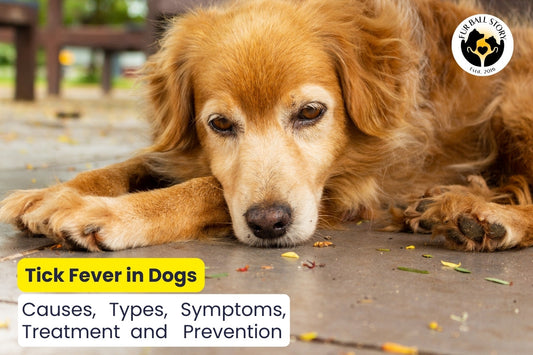
Tick Fever in Dogs: Causes, Types, Symptoms, Tr...
As the days get warmer, thousands of ticks become active. This brings the need to prevent ticks from attacking your pet as ticks pose life-threatening complications like Tick Fever. By...
Tick Fever in Dogs: Causes, Types, Symptoms, Tr...
As the days get warmer, thousands of ticks become active. This brings the need to prevent ticks from attacking your pet as ticks pose life-threatening complications like Tick Fever. By understanding the signs, causes, and ways to prevent tick fever, you can ensure your pet’s health and happiness. This blog on Tick Fever in Dogs: Causes, Types, Symptoms, Treatment & Prevention helps you know everything about Tick Fever. What Causes Tick Fever in Dogs? When an infected tick bites a dog, infection is transmitted by the protozoa released in the blood. Tick fever is caused by protozoa which is transmitted on tick bite. In India, the most common tick responsible for spreading tick diseases is the Brown Dog Tick (Rhipicephalus sanguineus). P.S. In humans, not all mosquitoes cause diseases, except the ones that carry Dengue and Malaria. Similarly, not all ticks are dangerous, only the ones that carry an infection are deadly. Common Type of Tick Borne Diseases in Dogs Tick Diseases Cause Symptoms Result Babesiosis Babesia canis & Babesia gibsoni Fever, jaundice, pale gums, anaemia Can cause severe blood loss or organ damage Ehrlichiosis Ehrlichia species Fever, lethargy, loss of appetite, joint pain, internal bleeding High chances of recurrence, attacks platelets Hepatozoonosis Ingestion of infected ticks (not bite-related) Fever, lethargy, loss of appetite, joint pain, internal bleeding, muscle weakness Cannot be completely cured, requires frequent blood tests & medication to compress the symptoms Anaplasmosis Anaplasma species Fever, lethargy, loss of appetite Attacks platelets, increasing the risk of bleeding Symptoms of Tick Fever in Dogs Major tick fever symptoms include high fever, vomiting, loss of appetite, joint pain, bleeding, and more. Tick fever might not necessarily mean having fever, more than 2 of these symptoms can also mean tick fever. Fever - Generally high fever (105*F) Lymphadenopathy - Swollen Lymph Nodes Anorexia - Loss of Appetite Indigestion - Vomiting & Diahorrea - Uncontrolled indigestion Joint Pain - Hind limbs are mostly affected Epistaxis - Bleeding from the nose Neurological signs - Seizures or walking difficulty Jaundice - Yellow discolouration of skin, gums & eyes Internal bleeding - Ehrlichia Canis attacks blood platelets How to Treat Tick Fever in Dogs? Treatment plan usually includes administering antibiotics and management to increase the chances of recovery. A medicinal course of the drug is administered mandatorily under a veterinarian’s supervision. Besides, supportive supplements are also given to boost immunity and platelets. Early diagnosis is the key to successful tick treatment for dogs. However, one must never stop the course of medicine in between, even if your pet seems better. Incomplete treatment often leads to worsened symptoms or even relapse of the disease. Tips to Prevent Tick Fever in Dogs Tick Preventive measures include using tick shampoo for dogs, regularly checking their coat for ticks, removing ticks on dogs and disposing of them if found. If you suspect tick fever in your pet, immediately seek veterinary advice. It is crucial to be prepared for ticks in advance. As soon as the Tick Season (April-September) starts take the necessary steps to keep ticks away from your pet. Make sure to get rid of the ticks and identify their source. Tickproof your pet with a tick spray for dogs throughout the year. One of the biggest mistakes pet parents make is leaving the course of medicine in between. If your dog starts to look better after a few days and you stop giving the prescribed antibiotics, it increases the risk of the illness coming back. If after a few days, you feel that your dog is getting better and stop administering the prescribed antibiotics, it might lead to relapsing of the disease. Prevention of Ticks on Dogs Tick-Proof Your Pet: Use tick shampoo for dogs like Shampooch or tick spray for dogs like Tick Free Regular Tick Checks: Especially after walks or outdoor play sessions, check under ears, paws, tail, belly and other tick prone areas. Regular Grooming: Regular grooming helps in the early detection of ticks and keeps your pet’s coat healthy. Clean Environment: Keep your home, backyard, and surroundings clean and tick-free. Be Vigilant During Tick Season: In India, April to September is the peak season for ticks, stay extra cautious during this period. Never Ignore Symptoms: Act fast if you notice unusual behaviour, appetite loss, or fever. Consult your vet immediately! Get Tick Free Now! Give your pet the best tick protection with Tick Free Combo! It helps to eliminate ticks and fleas from your pet’s skin and prevents their future occurrence. This combo relieves skin issues like irritation, itching, infection, rashes, redness, and inflamed skin caused due to tick bite. It contains a tick removing spray and a preventive shampoo. Made using natural ingredients, it serves as a powerful tick repellent for pets. FAQs: Tick Fever in Dogs: Causes, Types, Symptoms, Treatment & Prevention How to remove a tick from a dog? To remove tick from dog you can use a natural spray like Tick Free. and comb within 2-3 minutes to remove the tick. How to remove ticks on cats? Use a natural tick spray to remove ticks on cats within 2-3 minutes. Simply spray over the tick and comb within 2-3 minutes to easily remove the ticks. What kills ticks on dogs instantly? Tick Free Spray helps to instantly inactivate the ticks within 2-3 minutes, so that you can easily remove them using a tick comb.
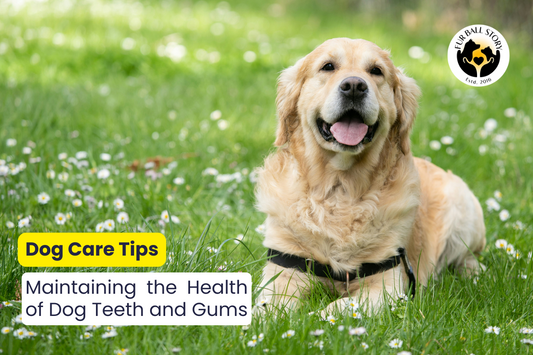
Dog Care Tips: Maintaining the Health of Dog Te...
Is your dog’s mouth stinking? Their dental health might be at risk. Dental care for dogs is often overlooked by pet parents, but poor oral hygiene can lead to serious...
Dog Care Tips: Maintaining the Health of Dog Te...
Is your dog’s mouth stinking? Their dental health might be at risk. Dental care for dogs is often overlooked by pet parents, but poor oral hygiene can lead to serious health issues such as gum disease, tooth decay, and more. Through this blog on Dog Teeth & Gums Care: Maintaining Oral Hygiene of Pets we aim to help you understand the importance of dog teeth & gums care and how to keep your furry friend's smile bright and healthy. Why Dog Oral Hygiene Matters? Much like humans, dogs too are susceptible to dental diseases. If left untreated, these issues can harm their overall health. Regular oral care is essential to prevent bad breath, gum disease, and tooth decay. If the oral health of dogs is ignored, it can lead to the below symptoms: Clinical Signs of Dog Teeth Problems Your dog will start showing signs when their teeth or gums are hurting, but they will show signs. Identifying these signs early can help prevent major dental issues down the road. Keep an eye out for these common symptoms: 1. Discomfort & Pain Dental issues can lead to significant discomfort for dogs, making them hesitant to eat. If you notice your pet avoiding hard food or refusing to eat, it can be a sign of pain. 2. Bad Breath (Halitosis) Bad breath is one of the first signs of oral problems in dogs. If your dog’s mouth emits bad odour, it could be a sign of tartar buildup, gum disease, or tooth decay. 3. Bleeding Gums If you notice bleeding gums in dogs, it could be a sign of gingivitis or inflammation of gums. Gingivitis can cause painful swelling and other serious dental conditions like periodontal diseases. 4. Teeth Discoloration Almost every problem involving teeth starts with deposition on them. Initially, the buildup is soft but with time it hardens and converts into tartar which is impossible to remove without surgery. It further leads to other problems like loosening of teeth, pus in the antrum, etc. 5. Pawing at the Mouth Dogs often paw at their faces or mouths to express pain or discomfort. If you notice this behaviour, it could be a sign that your dog is experiencing oral pain or irritation. 6. Facial Swelling In advanced cases, untreated dental issues can cause swelling on the face. This can be a sign of a serious infection that requires immediate veterinary attention. 7. Behavioral Changes Ongoing oral discomfort can lead to changes in your dog’s behavior. They may become more irritable, lethargic, or less playful. If your dog seems unusually quiet or withdrawn, it’s worth having their mouth checked. How to Prevent Oral Diseases in Dogs? The best way to deal with dental problems is to prevent them before they start. Here are some simple yet effective ways to maintain your dog’s oral hygiene: 1. Brush Your Dog’s Teeth Regularly Just like humans, regular brushing is the key to maintaining oral hygiene for dogs. Start by brushing their teeth and gradually increase the frequency until it becomes a routine. 2. Provide Soft Chew Toys Chew toys can help naturally clean your dog’s teeth while providing entertainment. Opt for soft, rubber toys that won’t damage your dog’s teeth. Natural chew items like frozen carrots or apples can also help with oral care. 3. Avoid Hard Toys or Raw Bones While chewing is great for cleaning teeth, very hard toys or raw bones can cause damage to your dog’s teeth and gums. Stick to soft and safe chew toys to avoid any damage. 4. Regular Vet Check-ups Routine vet visits are vital for maintaining your dog’s dental health. Professional dental exams can catch any issues early and prevent serious conditions. Your vet may recommend a professional cleaning to keep your dog’s teeth in perfect shape. 5. Start Early with Puppy Training Introduce your puppy to tooth brushing early on. Teaching them to tolerate brushing and handling their mouth area for regular inspections will make maintaining oral hygiene much easier in the future. Spray Away Dental Woes Now While brushing is essential for overall oral health, you can also freshen your dog’s breath without a toothbrush! All you need is Canni Clean Mouth Spray. A natural, non-toxic mouth spray that neutralizes odors and keep your dog’s oral cavity cleaner. With this effective mouth freshener spray, you can ensure their breath stays fresh, and any discomfort is eliminated. Final Thoughts Maintaining your dog’s oral hygiene is just as important as their overall health and well-being. With simple steps like regular brushing, chew toys, and routine vet visits, you can prevent dental problems and keep your pup’s smile bright and healthy. Don’t wait for bad breath or swollen gums to start troubling your fur ball. Begin caring for your dog’s teeth today!

Canine Transmissible Venereal Tumor: A Sexually...
Did you know that dogs can get a type of cancer that’s contagious but treatable? It is called Canine Transmissible Venereal Tumor (TVT), which is manageable with the right care...
Canine Transmissible Venereal Tumor: A Sexually...
Did you know that dogs can get a type of cancer that’s contagious but treatable? It is called Canine Transmissible Venereal Tumor (TVT), which is manageable with the right care and prevention. In this blog on Canine Transmissible Venereal Tumor: Causes, Signs, Diagnosis & Treatment to keep your dog happy and healthy. What is Canine Transmissible Venereal Tumor? Trans Venereal Tumor is a contagious, cancerous disease that commonly affects dogs. It is also known as Canine Transmissible Venereal Tumor (CTVT) or Sticker's Cell Tumor. This disease arises from the dysregulated growth of Histiocytic Cells, which are a type of immune system cell found in several areas of the body, including the skin. TVT in dogs develops from skin Histiocytic Cells that are malignant (cancerous) tumours. Different from other cancers, Canine TVT can spread between dogs. How is Canine Venereal Tumor Transmitted? TVT in dogs spreads through the transfer of living cancer cells between dogs. It is the only tumour that spreads in nature by cell transplantation. Mating TVT is usually transmitted during mating, which is the most common cause of this disease. Social behavior It can also spread through social behaviours like licking, sniffing, scratching, or biting. Grooming TVT can also transfer from a mother to her puppies through grooming if the mother licks her infected genitalia and then licks the puppies. Feeding Puppies that feed on an infected mother might develop a tumour on or around their mouth or lips. Signs of Canine Transmissible Venereal Tumor Genital Visible masses on the vulva or penis, bloody discharge from the genital area or difficulty urinating. Nasal Nasal discharge, sneezing, bleeding from the nose, facial swelling, and sometimes facial deformity. Diagnosis of Canine Transmissible Venereal Tumor CTVT in dogs is usually diagnosed through cytological examination by analysing cells from bodily tissues or fluids. Most of the time doctors provide treatment based on the following factors: Clinical signs - Bleeding from the nasal or genital area Physical examination - Cauliflower-like growth will be felt in the genital area History - Generally there is a history of mating Treatment of Canine Transmissible Venereal Tumor Although spontaneous regression can occur, TVT is usually progressive and treated accordingly. Complete surgical excision, radiotherapy, and chemotherapy are effective treatments. For Chemotherapy, treatment cycles usually last for a few weeks, and most dogs respond well, achieving full remission. Monitoring for side effects, such as decreased white blood cell counts, is important. The rate of tumour regression is negatively correlated with tumour size, older age, and season; hot and humid seasons are usually associated with poor response to treatment. Usually, total remission is achieved in 4 to 6 doses. Generally, x-rays are done to rule out the metastasis to the lungs. If the lungs are clear of any metastasis then the prognosis of this tumour is very good. Prevention of Canine Transmissible Venereal Tumor It Is recommended to monitor your pets and do not allow random mating with multiple dogs of unknown history. Do not let them mate with other dogs unless the said dog is certified as 'fit' by a veterinarian. Spay or neuter your pet to reduce mating activity and the risk of transmission. If you notice any symptoms of Canine Transmissible Venereal Tumor, contact your veterinarian for early diagnosis. Key Takeaway: Beat TVT with Early Action Your dog’s health is priceless and knowing about conditions like Canine Transmissible Venereal Tumor can empower you to take quick actions. With proper care and early diagnosis, your furry friend can overcome TVT. Just trust your vet, stay vigilant, and your dog will lead a longer, healthier, and happier life by your side.
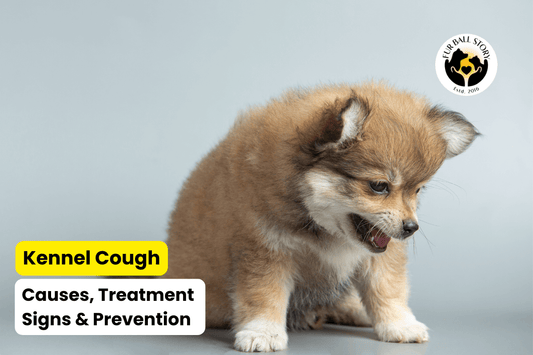
Kennel Cough in Dogs: Causes, Signs, Treatment,...
Kennel Cough in Dogs: Causes, Signs, Treatment, and Prevention
Kennel Cough in Dogs: Causes, Signs, Treatment,...
Is your dog experiencing a persistent cough? It could be kennel cough, a common condition that affects many dogs worldwide. Check out this post on 'Kennel Cough in Dogs: Causes, Signs, Treatment, and Prevention' to learn about the symptoms, causes, and ways you can keep your pup safe from this contagious disease. What is Kennel Cough in Dogs? Kennel cough is a disease that affects the respiratory system of dogs. It is caused due to inflammation of the trachea or windpipe. Though kennel cough is a mild, self-limiting disease; it may progress to bronchopneumonia in puppies or chronic bronchitis in debilitated adult or aged dogs. Causes of Kennel Cough in Dogs There are multiple organisms that are responsible for causing Kennel cough in dogs. Bacteria like Bordetella bronchiseptica and viruses like canine parainfluenza and canine adenovirus cause kennel cough. It is a highly contagious disease that transmits through air droplets when infected dogs cough, sneeze, or even breathe in close proximity. It can also spread on sharing water bowls or from infected surfaces commonly at places like kennels, dog parks, or grooming centres. Clinical Signs of Kennel Cough in Dogs The prominent clinical sign of kennel cough is a cough that sounds like a "goose honk" - prominently known as “honking cough” that may be followed by retching and gagging. The cough is easily induced by gentle palpation of the larynx or trachea. Eventually, you may notice the development of more severe signs including: Fever Purulent nasal discharge Depression Anorexia ‘Wet cough’ which contains phlegm is indicative of bronchopneumonia. Stress, particularly due to adverse environmental conditions and improper nutrition contributes to a relapse during recovery. Diagnosis of Kennel Cough in Dogs History and clinical signs Kennel cough can be suspected when the dry or wet cough suddenly develops 5-10 days after exposure to other susceptible or affected dogs. Severity usually diminishes during the first 5 days, but the disease persists for 10-20 days. Tracheal trauma caused due to intubation may produce a similar but less severe syndrome. Radiography Thoracic radiographs are essential to determine the severity of the disease and to exclude other causes of cough. Radiography is normal in dogs with cough. IEvidence of alveolar disease can be found if the disease has progressed to pneumonia. Treatment of Kennel Cough in Dogs It is majorly a self-limiting disease that resolves on its own, but you can opt for the following treatment options by consulting your vet: Supportive therapy Antimicrobial therapy (only if indicated by culture and sensitivity) Dogs with a cough only often do not require hospitalization. If a dog requires hospitalization, it is isolated from other animals in the hospital. Antibiotics are usually not needed unless there is evidence of pneumonia. Prevention of Kennel Cough in Dogs Preventive vaccination, called Bordetella is available for both puppies and adult dogs. However, it is not included in core vaccines; meaning in general it is not life-threatening. The intranasal (nose spray) version of the Bordetella vaccine is most commonly used. An injectable form and an oral (administered by mouth) form are also available. One advantage of the intranasal Bordetella vaccine is that it has a fast onset of immunity within 48-72 hours. Most veterinarians recommend the first intranasal or intraoral Bordetella vaccine between eight and 14 weeks of age. The initial vaccine may need to be repeated within 2-4 weeks for full immunisation, depending on the age of the puppy at the time of vaccination and the type of vaccine used. Conclusion Kennel Cough is a highly contagious respiratory disease that affect dogs. By understanding its causes, symptoms, and treatment options, you can take proactive measures to protect your dog. Early detection and treatment are key to ensuring a fast recovery. Always consult your veterinarian if you suspect. By staying informed, practicing good hygiene, and considering kennel cough treatment, you can minimize the risk of kennel cough and keep your furry friend happy and healthy!
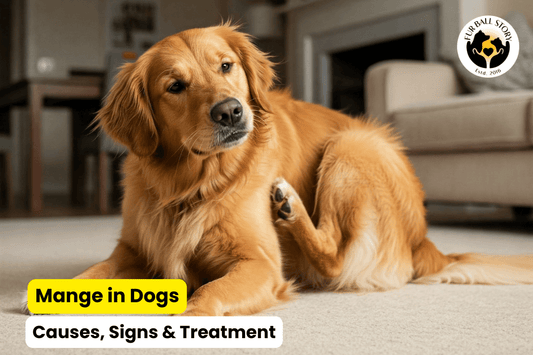
Mange in Dogs: Causes, Signs & Treatment
Demodicosis can be a challenging condition for your pet, but early detection, proper care, and the right treatment facilitate easy recovery. By understanding the causes and treatments for Demodicosis, you...
Mange in Dogs: Causes, Signs & Treatment
What is Mange? Mange, also known as Dermodicosis in dogs, is a skin condition that is caused due to Demodex mites. These are microscopic mites that live in the hair follicles of dogs. When viewed under the microscope, this mite is shaped like a cigar with eight legs. Demodectic mange which is known as ‘Demodex’ or ‘red mange’ is the most common form of mange in dogs. Causes of Mange in Dogs All dogs and even humans have a few of these mites on their skin as normal commensals. As long as the body's immune system is functioning properly, these mites cause no harm. Demodectic mange in dogs most often occurs due to an immature immune system, allowing the number of skin mites to increase rapidly. This disease occurs primarily in dogs less than 12 to 18 months of age. As the dog matures, its immune system also matures. Signs of Mange in Dogs Surprisingly, demodectic mange in dogs may not itch severely. Even though it loses hair in patches, however, there could be cases of immense itching too. This response depends upon certain factors like the severity of the disease, the immune system of the dog and his surrounding conditions. The hair loss usually begins on the face, especially around the eyes. When there are only a few patches of hair loss, the condition is referred to as localized demodectic mange. If the disease spreads to other areas, the condition is referred to as generalized demodectic mange. Mange Treatment for Dogs You need a confirmatory diagnosis to begin treatment of mange in dogs. Your veterinarian will take deep skin scrapings and examine them under a microscope to diagnose this disease. The finding of a larger-than-normal number of Demodex mites in skin scrapings confirms the diagnosis. Topical options for treatment of demodectic mange include: Shampooing with special cleansing shampoos containing benzoyl peroxide helps to flush out and open the hair follicles because mites reside inside them. Bathing with Amitraz 12.5 % weekly for at least 4 weeks. There are several 'spot-on' topical treatments, such as moxidectin + imidacloprid and topical fluralaner. Note: Always consult your veterinarian for the most suitable options. At-Home, Natural Relief! Eczo Pet is an Ayurvedic anti-bacterial and anti-fungal cream that helps to relieve fungal infections and common skin issues. It provides relief in conditions like mange, dermatitis, eczema and various allergies, giving your dog relief from discomfort. The natural ingredients like Neem, Karanj, and Bakuchi make this ointment perfect for treating skin infections. Eczo Pet relieves itching, soothes irritated skin and heals bacterial buildup. Conclusion Demodicosis can be a challenging condition for your pet, but early detection, proper care, and the right treatment facilitate easy recovery. By understanding the causes and treatments for Demodicosis, you can help ensure your dog remains happy, healthy, and comfortable. Stay informed and take the best care of your furry friend!

Holi 2025: Celebrate Responsibly with Furry Fri...
As you celebrate Holi 2025, let every creature feel safe and loved. With splashing colors, joyful music, delicious delicacies, and precious memories, don’t forget the happiness of animals who share...
Holi 2025: Celebrate Responsibly with Furry Fri...
The true joy of any celebration doubles when furry friends are by your side. Holi is all about mouth-watering Gujiyas, cooling Thandai, colourful splashes, joyful music, and grooving parties. However, animals suffer the most during this period because of loud noise and toxic colours. To ensure a safe, happy, and stress-free Holi for your pet, check this blog on ‘Pet-Friendly Holi 2025: Celebrate Responsibly with Your Furry Friend’. Spread Love & Joy At the end of the day, Holi is all about spreading love and joy. Make the festival special for every creature with compassion. Be extra affectionate and give them food & shelter. Celebrating Holi can be a fun and safe experience if celebrated responsibly. Pay extra attention to pampering your pet, keeping their emotional well-being in mind. That’s how you can enjoy a Happy Holi while ensuring your furry friends stay calm and comfortable. No Colors on Animals Holi colours can be extremely harmful to animals. It can cause allergic reactions on their sensitive skin, affect the eyes and lead to blindness. If an animal inhales or ingests color, toxins enter the body and damage their organs. Do not throw holi colours on any animal. They have no option but to lick themselves and get off the colours from their body. If you have a pet who has color stuck on their fur, gently wash it off using a mild pet shampoo. Stress-Free Environment What we see as exciting holi games like water balloon fights or color splashing can be overwhelming for animals. The sudden splash of water, loud noise and chaotic environment trigger anxiety in animals. Avoid playing music loud and throwing water on animals. Pet parents can provide some engaging toys and treats to keep their pets stress-free indoors and also help distract them from the chaos outside. Keep Your Pet Indoors Holi celebrations are accompanied by loud noise and music which is stressful for pets. These sudden noises and chaotic environments can be scary for pets. The best way to help them stay calm is by keeping them indoors, away from the crowds and festivities. Create a quiet, safe space in your home for your pet to relax. You can play some soothing music or a holi song with soft tunes to help drown out the noise. If your pet gets particularly anxious, consider closing the windows to minimize external disturbances. Happy Holi! As you celebrate Holi 2025, let every creature feel safe and loved. With splashing colours, joyful music, delicious delicacies, and precious memories, don’t forget the happiness of animals who share our world. By celebrating with empathy, we can unleash the true colours of love, joy, and togetherness. Happy Holi to you and every fur ball around!
